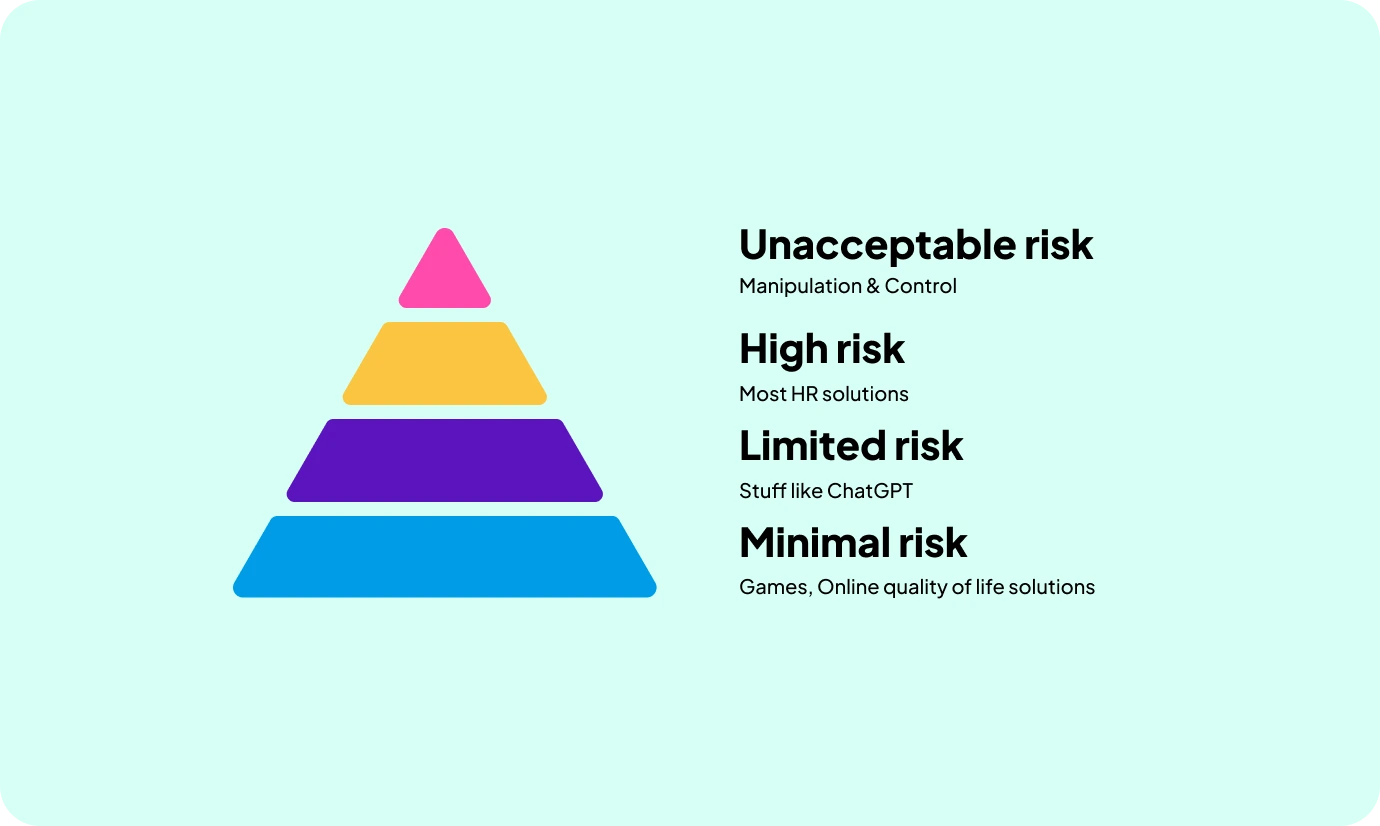How to build an AI-Literate workforce

If you’re wondering how to prepare your workforce for the rise of AI and stay compliant with new regulations, AI literacy is the key. According to a recent global study by KPMG, 61% of employees haven't received AI-related education or training, yet 3 in 5 believe they can use AI effectively. This gap between perception and reality highlights the urgent need for comprehensive AI literacy training.
In this article, we'll cover:
- What AI literacy is and why it matters.
- Understanding the EU AI Act and its implications for AI literacy.
- How to provide effective AI literacy training for your employees.
- How to use AI responsibly within your organisation.
Plus, we’ll also feature insights from our very own internal artificial intelligence expert Remy Reurling.
What is AI Literacy?
AI literacy can seem like a vague concept, but it's crucial for organisations to understand its importance. So, what is needed for AI literacy exactly?
AI literate employees should be able to:
- Understand what AI is and what it does.
- Know how and why AI can help them in their role.
- Grasp the risks of AI and use it responsibly.
Remy Reurling, Creative Producer and GoodHabitz’s in-house artificial intelligence expert, defines it this way:
"AI literate workforces will know and understand how to use AI safely and effectively."
Why is AI Literacy important?
The responsible use of AI is vital for organisations. As AI becomes more integrated into our daily workflows, understanding its capabilities and limitations is paramount.
Remy notes:
"There are a lot of people that use AI, but don’t really know what it does and how it does it. So as a result, these same people end up doing the wrong things. For instance, they make the wrong prompts, or they share sensitive information over ChatGPT."
Beyond responsible use, AI literacy is becoming a compliance issue. For organisations that trade within the EU, AI literacy is mandatory training required by law under the EU AI Act.
What is the EU AI Act?
The EU AI Act is a regulation that aims to ensure the safe and ethical development and use of artificial intelligence within the European Union. It establishes a legal framework for AI systems, categorising them based on risk levels and imposing specific requirements for high-risk applications.
What is the AI Literacy requirement?
The AI literacy requirement applies to companies that deploy or provide AI systems within the EU. These companies must ensure their staff and anyone dealing with the operation and use of AI systems on their behalf have a sufficient level of AI literacy.
When does the AI literacy requirement apply?
The AI literacy requirement was brought into effect on the 2nd of February 2025. However, by August 3rd, 2026, employers must train all staff who are using or are impacted by AI and be ready to prove it.
How to provide AI Literacy training for employees
Building a concrete plan for AI literacy training is essential. Remy shared a three-step process to ensure employees are on the right path:
- Make a clearly communicated, defined plan for AI integration. Whether your company is using generative AI or not, there needs to be structures in place on how it should be implemented.
- Make clearly established guidance for AI use. What can employees do, and what can they not do?
- Training is key. Ensure your employees feel empowered to use AI and provide a safe, secure environment for them to practice their acquired skills such as prompting.
Identify an AI Literacy learning champion
To ensure AI literacy learning efforts don't dwindle, identify an internal champion.
Remy explains:
"You need to identify an internal champion for the use of AI. Find someone who is powerful enough in the organisation to align across the organisation how and why AI can be used. This approach means you can get everyone up to speed on the same page and ensure that guardrails are being followed consistently."
Find someone who can be trusted to lead by example and demonstrate the fundamentals of AI literacy to other peers and colleagues.
Teaching AI in this way ensures scalability, meaning you can build a concrete learning culture around the topic.
How to use AI responsibly
Alongside the skills to use AI effectively, knowing how to use AI responsibly should be at the forefront of the minds of HR and L&D leaders.
Remy emphasises:
"Throughout the whole process of AI implementation, be accountable, fair, informed, safe, and transparent… It’s no longer 2022, where AI was in the Wild West era. Anything that we try out now has far reaching implications."
It can be as simple and powerful as ensuring data controls in ChatGPT are turned off, so the AI doesn’t train on commercially sensitive data.
Another practical tip is that employees can be made aware of the risks associated with using AI in the workplace by using the four M’s.
- Misuse: AI use to purposefully create malicious content.
- Misapply: AI use that leads to the creation of harmful content accidentally.
- Misadventure: The purposeful consumption or sharing of AI content that is misleading.
- Misrepresent: The accidental consumption and sharing of inauthentic content created by AI.
Discover our Responsible AI Lesson to learn more on how to use AI safely and responsibly.
Conduct risk assessments on AI tools
The EU’s AI Act has outlined risk factors for AI systems:

- Minimal Risk: These AI systems exist within games, for instance. Or the online quality of life solutions, such as web extensions.
- Limited Risk: ChatGPT is an example – these systems are limited as a person can only talk to them. There is some risk as one of your employees could put data in the system, for example.
- High Risk: Most HR solutions fall into this category. These AI systems concern anything that has to do with employees’ lives, such as salaries or performance reviews.
- Unacceptable Risk: This has anything to do with manipulation and control. For example, social credit systems which are also linked to HR systems, but with far more reaching consequences.
Remy explains more in the clip below:
The bottom line? Think about how these factors influence your overall strategy towards AI training? Are you and your employees risk averse?
Prompt engineering is more than just asking GPT
A core part of AI literacy is being able to evaluate the output of AI models, like Large Language Models (LLM).
Remy explains:
"Your employees need to know that LLMs are just calculators with words and not concerned with ‘the right answer’. Instead, it’s focused on putting the right words in the right order."
This is where prompt engineering comes in, and the core of this is building actual instructions to computers. In other words, crafting effective inputs to receive valuable outputs.
Here are the specific skills that are required from your employees, for this to be successful:
- Use of exact language
- Adding variables
- Writing for the needs of the user
- Crafting comprehensive prompts with small tokens
Here's a video with more information:
Final thoughts on AI literacy
AI literacy is no longer a luxury but a necessity for organisations seeking to thrive in the age of artificial intelligence.
By providing comprehensive AI literacy training, promoting responsible AI usage, and staying informed about regulations like the EU AI Act, businesses can empower their employees and unlock the full potential of AI.
If you’re looking for more information on how to build an AI literate workforce, watch the full webinar with hosts Remy and Alice Svoboda, Customer Success Manager at GoodHabitz.
Ready to take the next step? Explore GoodHabitz’s AI literacy course and empower your workforce with the skills they need to succeed.



